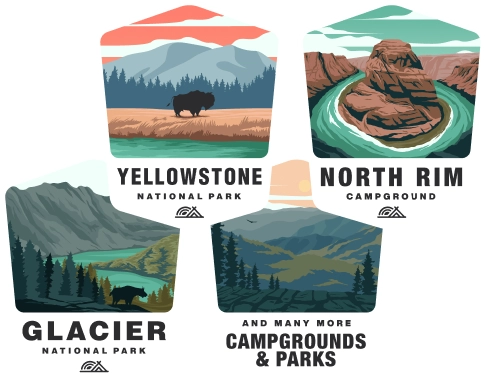Camping at Plumas National Forest
Camping in Plumas National Forest
Overview Plumas National Forest is located in the Sierra Nevada in northern California. It offers a wide range of outdoor activities such as hiking, fishing, boating, and, of course, camping. With its natural beauty, including lush woodlands, numerous lakes, and streams, it's a popular destination for camping enthusiasts.
Camping Options
- Developed Campgrounds: Plumas National Forest has many developed campgrounds that provide a variety of amenities, including picnic tables, fire rings, toilets, and sometimes potable water. Some campgrounds can be reserved in advance, while others are first-come, first-served.
- Dispersed Camping: If you prefer a more secluded experience, dispersed camping (camping outside of designated campgrounds) is allowed in many areas of the forest. Remember that you won’t have access to amenities and must follow Leave No Trace principles.
- Group Campgrounds: There are also several group campgrounds suitable for larger parties. These usually require reservations and a fee.
Reservations and Fees Reservations for some campgrounds can be made through the National Recreation Reservation Service online or by phone. Fees vary depending on the campground and the amenities offered.
Stay Limits There are usually limits on how long you can stay in one spot to allow others to enjoy the area and to minimize environmental impact. Check the local regulations before setting up camp.
Campfire Permits
- Developed Campgrounds: Normally, campfires are permitted in provided fire rings.
- Dispersed Camping: You often need a California Campfire Permit for dispersed camping, which is available free of charge from any Forest Service, BLM, or CALFIRE office, or online.
Seasons Plumas National Forest is open year-round, but the best time for camping is usually from late spring to early fall. Many of the campgrounds are closed in the winter due to snow.
Wildlife Be mindful of wildlife in the area. Store food properly to avoid attracting bears and other animals. Check if any bear-proof containers are necessary or provided.
Water Sources Some campgrounds have potable water, but it's wise to bring your own or be prepared to treat water from streams or lakes if you're camping off the beaten path.
RV Camping Several campgrounds in Plumas National Forest can accommodate RVs. Check in advance for any length restrictions and whether hookups are available.
Local Attractions While camping, you might want to visit local attractions like Lake Almanor, Feather River, and various hiking trails.
Leave No Trace Always follow Leave No Trace principles to minimize your impact on the environment. This includes taking out all your trash, properly disposing of waste, and respecting wildlife and other campers.
Emergency Preparedness Be prepared for emergencies by knowing the area you are camping in, having a way to contact authorities if needed (be aware cell service may be spotty), and keeping a first-aid kit on hand.
By following these guidelines, you can ensure that your camping experience in Plumas National Forest will be enjoyable, safe, and environmentally responsible.
